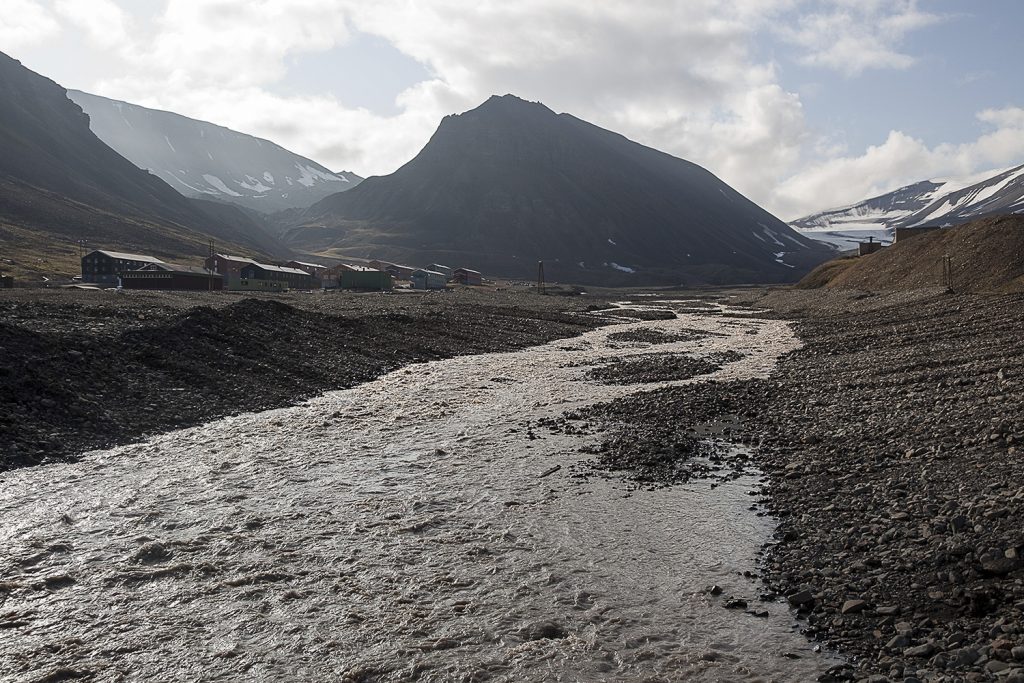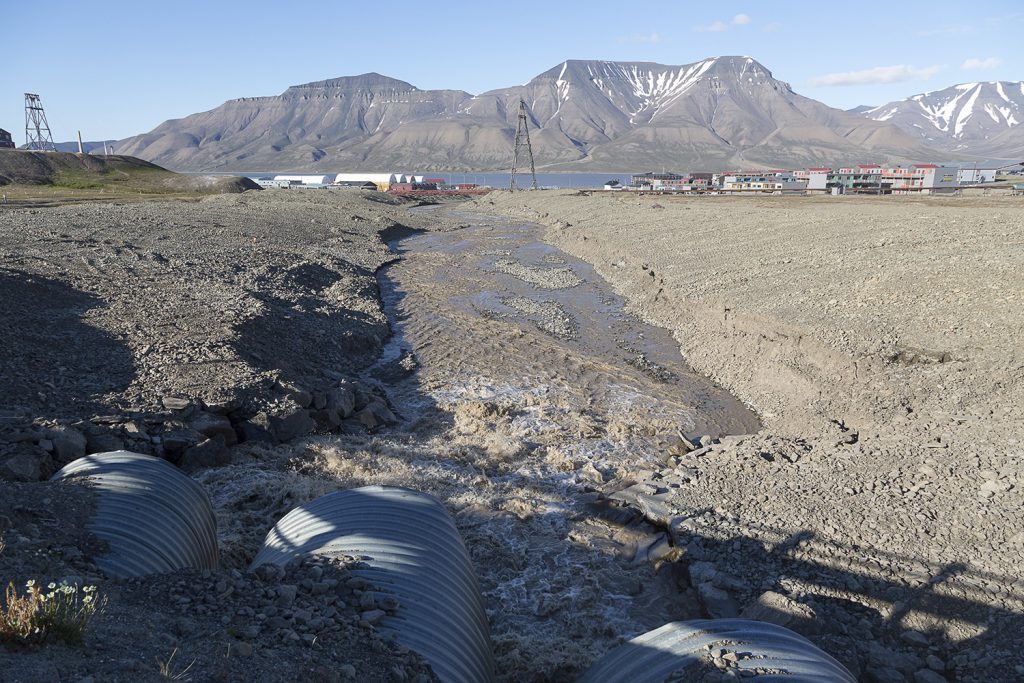During the snow-melt period in early summer, the brown, muddy water of the river Longyearelva can rise to impressive levels, and large stones move audibly along on the river bed. Excavators have to be put into use on a regular basis to keep the river in the channel that has been allocated to it according to the land use planning.
As long as an arctic river has got enough space, when the valley bottom is flat and wide, it will develop a typical pattern consisting of a large number of channels. The reason is the large volume of sediment that is provided by frost shatter and glacial erosion in the catchment area, overloading the river that has only a few short summer months to transport the huge amount into the sea. As soon as transport capacity is getting lost at the end of the summer as water levels are falling, stones, gravel and sand will remain where they are, blocking the river channel with a new gravel bank in the middle of the former river bed or on the side, forcing the river to move sideways next year or to split into two smaller channels. In the case of Longyearelva, this is prevented with considerable technical effort to secure space for buildings.
A tamed artic river


